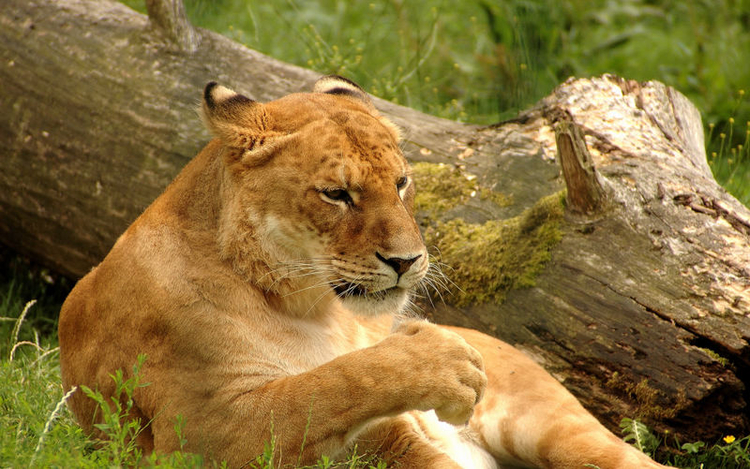Why Gir National Park Is Famous? its lion population is the reasons behinds its fame. This wildlife reserve is also the only place in India where you can find a massive population of marsh crocodiles.

After all, the home of the king of the jungle has to be famous. Lions don’t exist anywhere else except in Africa and the Gir National Park. If you choose to visit Gir, you will be under the guidance of expert guides. They will ensure that you get to fulfill your wildlife fantasies while exploring this renowned sanctuary. Gir is the only natural habitat in the world where the Asiatic Lions live and thrive. Apart from the lions, Gir houses many more elusive creatures.
Apart from Africa, Gir National Park of Gujarat is the only region in the world where lions roam freely. The castle of the kings of the jungle is about sixty-five kilometers southeast of the Junagadh district. The Government declared the geographical area of Sasan Gir as a wildlife sanctuary on the 18th of September, 1965. This decision led to the creation of a haven for the endangered Asiatic Lions. Approximately, the Gir National Park occupies one thousand four hundred and twelve square kilometers. The core area of the National Park measures around two hundred and fifty-eight kilometers. Today, one hundred and six males, two hundred and one females, and two hundred and thirteen young lions live here.
Indiscriminate hunting by the inhabitants of Junagadh led to a drastic decrease in the lion population. The animal used to occupy other areas of Asia, but human beings killed them all. However, the humane Nawabs of Junagadh directed their efforts in reviving the lions. They allowed the creatures to live inside the protected environment of their personal hunting grounds. Later, the department of forest officials took hold of the reins to preserve the most endangered species of India. In 1913, the number of lions reduced to around twenty. According to the census reports of 2015, that value rose to five hundred and twenty-three.
The Gir National Park of India is a sprawling ecosystem in itself. The entire area features dry climate and deciduous trees which makes it perfect for the lions to survive. The statistical data derived in 2015 informed that five hundred and twenty-three lions inhabit the entire Saurashtra Region. Leopards coexist with the lions, and their numbers cross the mark of three hundred. Other than the big cats, two species of deer exist here. Sambar Deer are among the largest antelopes that survive in India. Chousingha is yet another antelope that lives here. It is famous for being the only antelope with four horns.
Gir is the home of jackals, Indian foxes, striped hyenas, and other smaller carnivorous animals. Over two hundred species of birds rule the skies of Gir National Park as well. This natural reserve earned the title of being an essential zone for birds by the Indian Bird Conservation Network. The critically endangered Long-billed vultures also live here. Sasan Gir is also the blessed home of over forty species of amphibians and reptiles. There is a vast reservoir inside the sanctuary known as Kamleshwar. It is the best spot for marsh crocodiles to live and thrive. Snakes like Russell’s viper, Krait, King Cobra, and Saw-scaled viper also live here. Browse through our wide range of Gir Jeep Safari Packages with accommodation. Best pricing available for Gir Hotels & Resorts.
In this blog, We have explained Why Gir National Park Is Famous. We also arrange the Gir National Park & Wildlife Sanctuary Tours from Andhra Pradesh, Arunachal Pradesh, Assam, Bihar, Chhattisgarh, Goa, Gujarat, Haryana, Himachal Pradesh, Jharkhand, Karnataka, Kerala, Madhya Pradesh, Maharashtra, Manipur, Meghalaya, Mizoram, Nagaland, Odisha, Punjab, Rajasthan, Sikkim, Tamil Nadu, Telangana, Tripura, Uttar-Pradesh, Uttarakhand , West Bengal More.
For any inquiry. Please write to us info@reserveit.net or Call At +91 88005 05012 , +91 75573 22322 (24 Hrs Helpline & WhatApp)
Thank you for taking the time to read this blog. Your interest in our blog is truly valued - Thank You!
Q - Where Is Gir National Park Located?
Ans. Gir National Park is located in Gujarat, India in the districts of Junagadh.
Q - What is the main attraction of Gir National Park?
Ans. Asiatic lions is the main attraction of Gir Jungle. Gir is a home of 600 plus lions.
Q - Is it safe to visit Gir National Park?
Ans. Yes, Sasan Gir is safe for visitors. The safaris are conducted under strict regulations.